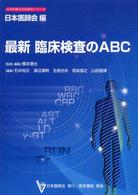Full Description
A practical guide to teaching the way a child's brain learns best
In this update of a bestselling classic, you will learn how to develop children's capacity and will to read. Each sequential chapter is practical, eye-opening, and exactly what you need to engage young learners, plan lessons, partner with parents, and align your PreK-3 classrooms to the science of learning and the science of reading. Gain the latest insights on:
Brain development from birth to age eight, plus the skills to nourish it, age by age and grade by grade
What the latest neuroscientific research now says about oral language acquisition
The evidence base for practices such as read alouds, inventive spelling, and sustained silent reading
Why vocabulary building must happen concurrently with phonological processing, decoding, fluency, spelling, and writing
How to artfully combine explicit teaching of skills with playful, multi-sensory routines every day
All aspects of memory are needed to develop successful readers. When we engage children's brains and build our teaching practices around what we know about how the human brain makes meaning, literacy learning makes more sense for children... and for us.
Contents
Preface
Acknowledgments
About the Author
Chapter 1: Learning From Birth to 2 Years
Chapter 2: Rapid Learning for 2- and 3-Year-Olds
Chapter 3: Preparing for This World at Age 4
Chapter 4: School Routines and Rapid Learning for 4- and 5-Year-Olds
Chapter 5: Preparing for Reading at Ages 4-6
Chapter 6: Teaching for Reading in First Grade
Chapter 7: Second-Grade Readers
Chapter 8: Transition Time for Third-Grade Readers
Chapter 9: Assessing and Responding to Readers With Disabilities
Chapter 10: Teachers and Students as Learning Partners
Chapter 11: Conclusion: A Dozen Key Learnings
Appendix A: Continuum of Developmental Benchmarks: Birth to Age 5
Appendix B: Cognitive Skills for Learning
Appendix C: Quick Reference Guide for Memory Systems
Glossary
References and Resources







